M. Di Renzo
Analysis of 3GPP and Ray-Tracing Based Channel Model for 5G Industrial Network Planning
Jul 23, 2024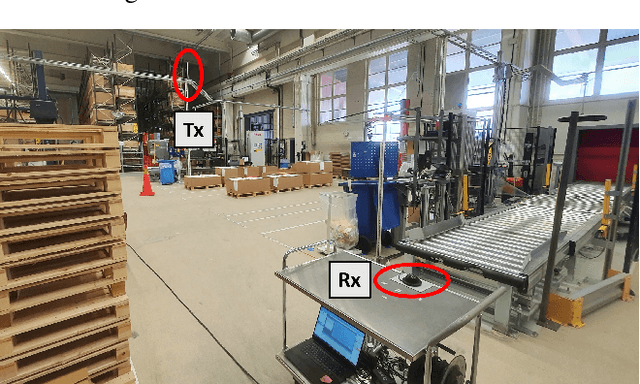
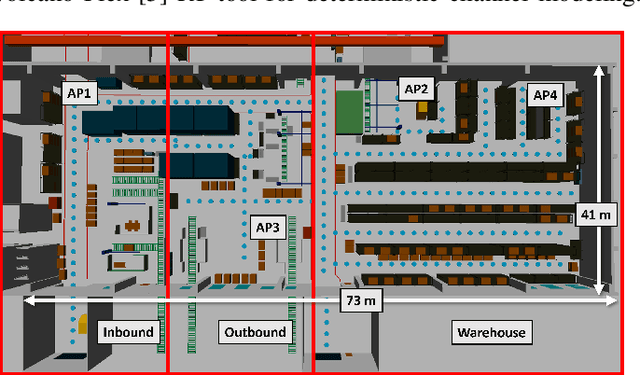
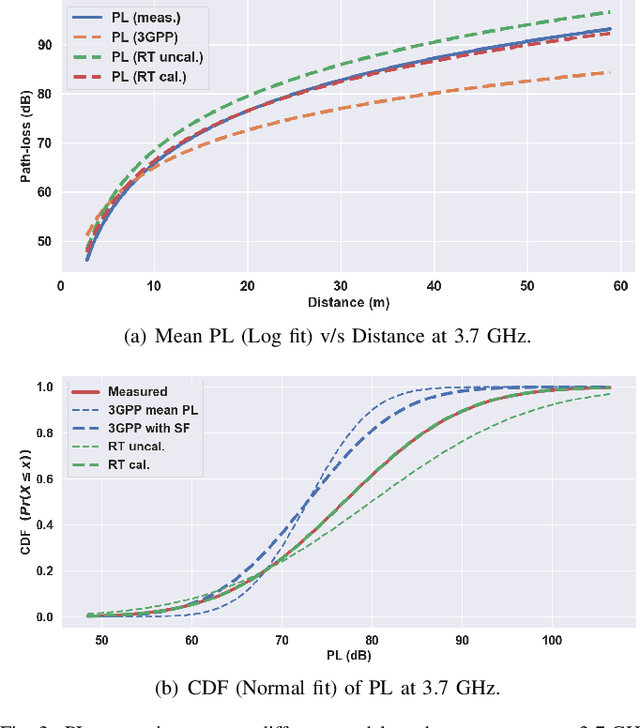
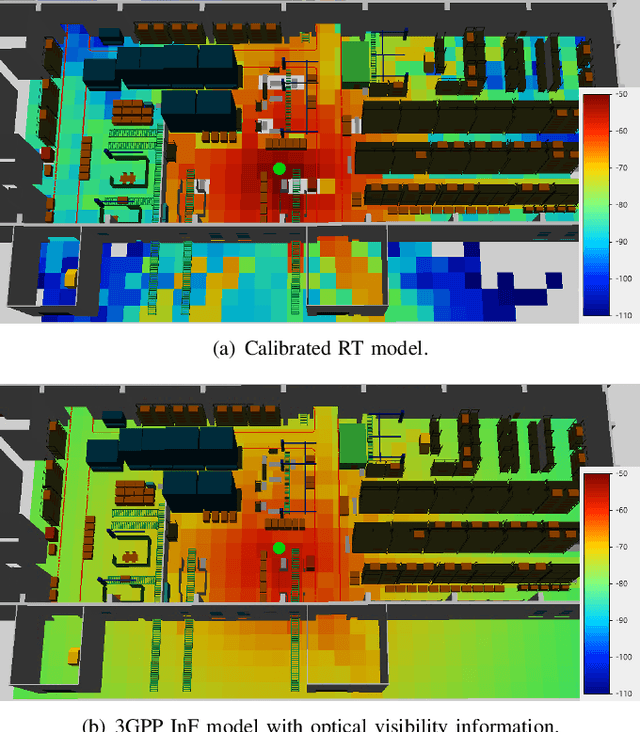
Abstract:Appropriate channel models tailored to the specific needs of industrial environments are crucial for the 5G private industrial network design and guiding deployment strategies. This paper scrutinizes the applicability of 3GPP's channel model for industrial scenarios. The challenges in accurately modeling industrial channels are addressed, and a refinement strategy is proposed employing a ray-tracing (RT) based channel model calibrated with continuous-wave received power measurements collected in a manufacturing facility in Sweden. The calibration helps the RT model achieve a root mean square error (RMSE) and standard deviation of less than 7 dB. The 3GPP and the calibrated RT model are statistically compared with the measurements, and the coverage maps of both models are also analyzed. The calibrated RT model is used to simulate the network deployment in the factory to satisfy the reference signal received power (RSRP) requirement. The deployment performance is compared with the prediction from the 3GPP model in terms of the RSRP coverage map and coverage rate. Evaluation of deployment performance provides crucial insights into the efficacy of various channel modeling techniques for optimizing 5G industrial network planning.
Exploring RIS Coverage Enhancement in Factories: From Ray-Based Modeling to Use-Case Analysis
Feb 16, 2024Abstract:Reconfigurable Intelligent Surfaces (RISs) have risen to the forefront of wireless communications research due to their proactive ability to alter the wireless environment intelligently, promising improved wireless network capacity and coverage. Thus, RISs are a pivotal technology in evolving next-generation communication networks. This paper demonstrates a system-level modeling approach for RIS. The RIS model, integrated with the Volcano ray-tracing (RT) tool, is used to analyze the far-field (FF) RIS channel properties in a typical factory environment and explore coverage enhancement at sub-6 GHz and mmWave frequencies. The results obtained in non-line-of-sight (NLoS) scenarios confirm that RIS application is relevant for 5G industrial networks.
Optimization of RIS-Aided MIMO -- A Mutually Coupled Loaded Wire Dipole Model
Jun 15, 2023

Abstract:In this letter, we consider a reconfigurable intelligent surface (RIS) assisted multiple-input multiple-output (MIMO) system in the presence of scattering objects. The MIMO transmitter and receiver, the RIS, and the scattering objects are modeled as mutually coupled thin wires connected to load impedances. We introduce a novel numerical algorithm for optimizing the tunable loads connected to the RIS. Compared with currently available algorithms, the proposed approach does not rely on the Neumann series approximation, but it optimizes the tunable load impedances alternately and one by one. At each iteration step, a closed-form expression for each impedance is provided by applying the Gram-Schmidt orthogonalization method. The algorithm is provably convergent and has a polynomial complexity with the number of RIS elements. Also, it is shown to outperform, in terms of achievable rate, two benchmark algorithms, which are based on a similar electromagnetic model, while requiring fewer iterations and a reduced execution time to reach convergence.
Efficient Ray-Tracing Channel Emulation in Industrial Environments: An Analysis of Propagation Model Impact
Jun 02, 2023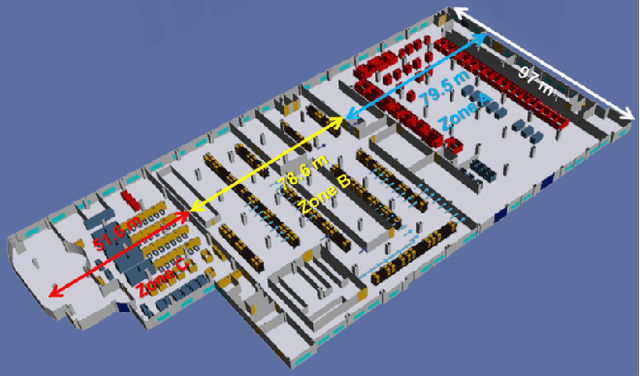
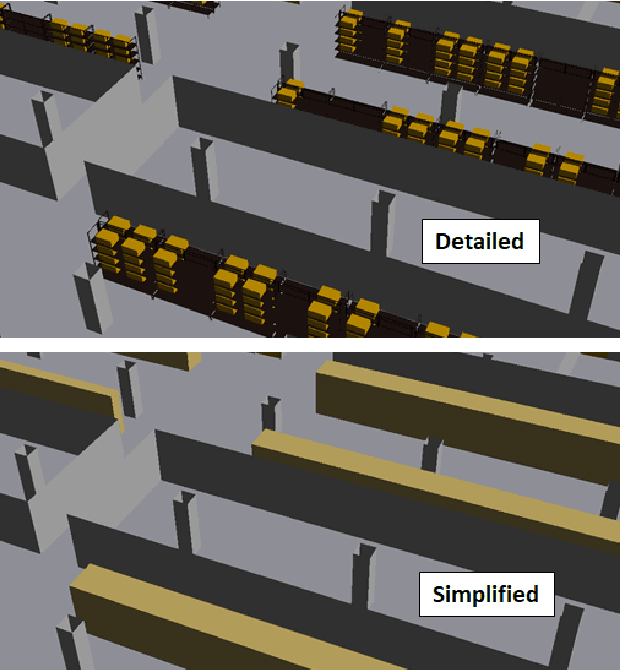
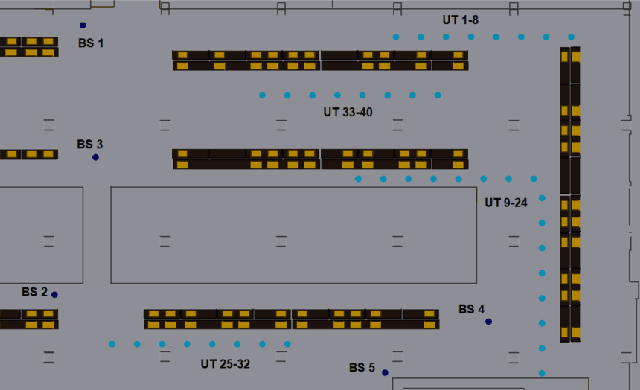
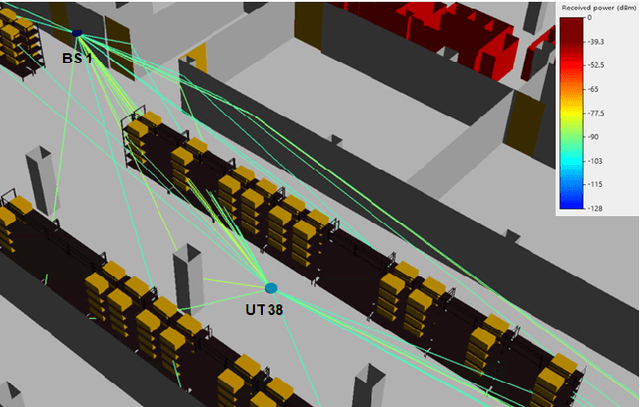
Abstract:Industrial environments are considered to be severe from the point of view of electromagnetic (EM) wave propagation. When dealing with a wide range of industrial environments and deployment setups, ray-tracing channel emulation can capture many distinctive characteristics of a propagation scenario. Ray-tracing tools often require a detailed and accurate description of the propagation scenario. Consequently, industrial environments composed of complex objects can limit the effectiveness of a ray-tracing tool and lead to computationally intensive simulations. This study analyzes the impact of using different propagation models by evaluating the number of allowed ray path interactions and digital scenario representation for an industrial environment. This study is realized using the Volcano ray-tracing tool at frequencies relevant to 5G industrial networks: 2 GHz (mid-band) and 28 GHz (high-band). This analysis can help in enhancing a ray-tracing tool that relies on a digital representation of the propagation environment to produce deterministic channel models for Indoor Factory (InF) scenarios, which can subsequently be used for industrial network design.
Reradiation and Scattering from a Reconfigurable Intelligent Surface: A General Macroscopic Model
Jul 30, 2021



Abstract:Reconfigurable Intelligent Surfaces (RISs) have attracted attention in the last year for their characteristics of nearly-passive, thin structures that can dynamically change their reflection or refraction behaviour, and therefore realize anomalous reflection, focalization, or other wave transformations, to engineer complex radio propagation environments. Evaluating the performance and optimizing the deployment of RISs in wireless networks need physically sound frameworks that account for the actual characteristics of engineered metasurfaces. In this paper, we introduce a general macroscopic model for the realistic evaluation of RIS scattering, based on its decomposition into multiple scattering mechanisms and aimed at being embedded into ray models. Since state-of-the-art ray models can already efficiently simulate specular interactions (reflection, diffraction) and diffuse scattering, but not anomalous reradiation, we complement them with a Huygens principle approach and two possible implementations of it. The different scattering mechanisms are combined through a suitable power conservation equation. Notably, multiple reradiation modes can be modeled through the proposed approach. In addition, we validate the overall model's accuracy by benchmarking it against several case studies available in the literature, either based on analytical models, full-wave simulations, or experimental measurements.
 Add to Chrome
Add to Chrome Add to Firefox
Add to Firefox Add to Edge
Add to Edge